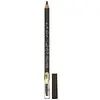What's inside
What's inside
 Key Ingredients
Key Ingredients

No key ingredients
 Benefits
Benefits

No benefits
 Concerns
Concerns

 Ingredients Side-by-side
Ingredients Side-by-side

Silica
AbrasiveMica
Cosmetic ColorantDimethicone/Divinyldimethicone/Silsesquioxane Crosspolymer
HumectantPolymethyl Methacrylate
Synthetic Fluorphlogopite
Pentylene Glycol
Skin ConditioningPEG-10 Dimethicone
Skin ConditioningCaprylyl Glycol
EmollientTriethyl Citrate
MaskingMagnesium Aluminum Silicate
AbsorbentPhenylpropanol
MaskingMethylpropanediol
SolventAlgin
MaskingDehydroacetic Acid
PreservativeEthylhexylglycerin
Skin ConditioningSodium Polyacrylate
AbsorbentCitric Acid
BufferingDipropylene Glycol
HumectantGlyceryl Caprylate
EmollientTocopherol
AntioxidantIron Oxides
CI 77891
Cosmetic ColorantCI 77163
Cosmetic ColorantSilica, Mica, Dimethicone/Divinyldimethicone/Silsesquioxane Crosspolymer, Polymethyl Methacrylate, Synthetic Fluorphlogopite, Pentylene Glycol, PEG-10 Dimethicone, Caprylyl Glycol, Triethyl Citrate, Magnesium Aluminum Silicate, Phenylpropanol, Methylpropanediol, Algin, Dehydroacetic Acid, Ethylhexylglycerin, Sodium Polyacrylate, Citric Acid, Dipropylene Glycol, Glyceryl Caprylate, Tocopherol, Iron Oxides, CI 77891, CI 77163
Ingredients Explained
These ingredients are found in both products.
Ingredients higher up in an ingredient list are typically present in a larger amount.
This synthetic powder is used to add a pearly/white color in cosmetics.
Mica is a naturally occurring mineral used to add shimmer and color in cosmetics. It can also help improve the texture of a product or give it an opaque, white/silver color.
Serecite is the name for very fine but ragged grains of mica.
This ingredient is often coated with metal oxides like titanium dioxide. Trace amounts of heavy metals may be found in mica, but these metals are not harmful in our personal products.
Mica has been used since prehistoric times throughout the world. Ancient Egyptian, Indian, Greek, Roman, Aztec, and Chinese civilizations have used mica.
Learn more about Mica